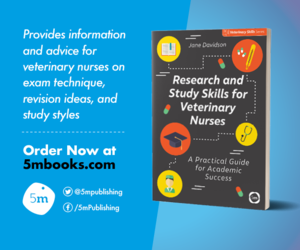The nature of Impermanence, attachment, and positive psychology.
Comments Off on The nature of Impermanence, attachment, and positive psychology.“Nothing is permanent— not even our troubles.”
– Charlie Chaplin
Impermanence is constant change, and it’s woven into the very fabric of our existence. Moments come and they go. Years go by. Kids grow up too fast. Holidays take ages to arrive and seemingly minutes to pass. Time flies when you’re having fun. The breath you took five minutes ago is long gone.
Intellectually, we understand that our pet will be born, age, and die, that a car will break down, that the traffic jam will eventually move. Our work is to move that understanding from our intellect and nestle it deep in our hearts. But how does that benefit us? Sounds miserable, right?
There’s a beauty to impermanence. You know, in Japan, people flock to the hillsides to see the spring blossoming of cherry blossoms. The festival is over after a few days as are the blooms. Tiny blue flax flowers in North America last for just a day. Glastonbury is amazing. But it has to end because it’s impossible to party that ardij
Impermanence isn’t a good or a bad thing. It’s just a fact. We rely on constant change; we rely on impermanence.
Ancient trees will burn in great forests so new ones can be born. Evil dictatorships crumble.
Winter days can be cold, wet, and dark. Some people love winter. Others of us prefer sunshine, long warm evenings and swimming in the sea. How many Winters have you seen pass and give way to Spring and Summer? We need Winters to be impermanent
So how does really understanding impermanence benefit our wellbeing?
If you’re having a great day, enjoy it to its fullest, it won’t last.
And if your day is feeling like a disaster, hang in there, it won’t last.
No matter how long that ops list is. It will eventually all get done. That’s also the nature of impermanence.
If you’re dreading the root canal treatment you’re having next week, have faith that that day will come. And it will go. And the root canal procedure will be done.
So, how can I claim that Impermanence is a path to fulfillment and an antidote to regret? Accepting the nature of impermanence is a key Buddhist teaching. It also leads neatly into relinquishing attachments which, according to Buddhist teachings, are one cause of suffering.
Impermanence versus attachment
So, if I can accept that I am impermanent, as is my cat, my job, this good or bad day, my holiday, then I can hold myself back from becoming so attached to the necessity of it being permanent that I can relax a little. Instead of fearing and dreading the end of my holiday, I can enjoy it even more mindfully and embrace every tiny joyous thing about it even though I know that it will pass.
With time, I can accept that everything, even all humans on earth including me are fleeting in some way. That is acceptance and letting go of my attachment and desperate need. And that’s ok.
Attachment :
According to Buddhism, attachment is the root of suffering, and it is usually the reason why impermanence is difficult to fathom for many people. Rationally accepting that everyone and everything is temporary is a refreshing concept, and whether you want to believe it or not, it’s true.
Positive Psychology :
While clinical psychology has largely focused on diagnosing and treating mental illness and diseases, positive psychology is concerned with cultivating positive well-being, which is very different from merely eliminating negative mental states.
We already know that external factors don’t determine one’s happiness. Certainly, positive external factors compound and complement one’s overall contentment, but internal factors are required to achieve an authentically joyous life. True happiness comes from within.
So, although a fortnight in the Maldives would be fantastic right now, it would come, and then it would be over. i.e., impermanent. Then you are still the same person (although a bit more rested), left with your mental state which only you can cultivate
It is also important to understand that grasping for positive thoughts, emotions, and occurrences in life is not what positive psychology suggests. If you accept the notion of impermanence but still attempt to force happiness and joy into your life, you are missing the point.
This quote from Paul T.P. Wong (2007), a positive psychologist sums up the concept of impermanence and attachment :
“Craving for happiness necessarily causes us to fear or reject anything that causes unhappiness or pain.
Attachment to possession and achievement invariably leads to disappointment and disillusionment because everything is impermanent.
Thus, the positive psychology of pursuing positive experiences and avoiding negative experiences is counterproductive, because the very focus on happiness contains the seed of unhappiness and suffering.
Failure to embrace life’s experience in its entirety is at the root of suffering.” References: Wong, Paul T.P. (2007). Chinese Positive Psychology. International Network on Personal Meaning. Retrieved from http://www.meaning.ca/archives/archive/art_Chinese-PP_P_Wong.htm
